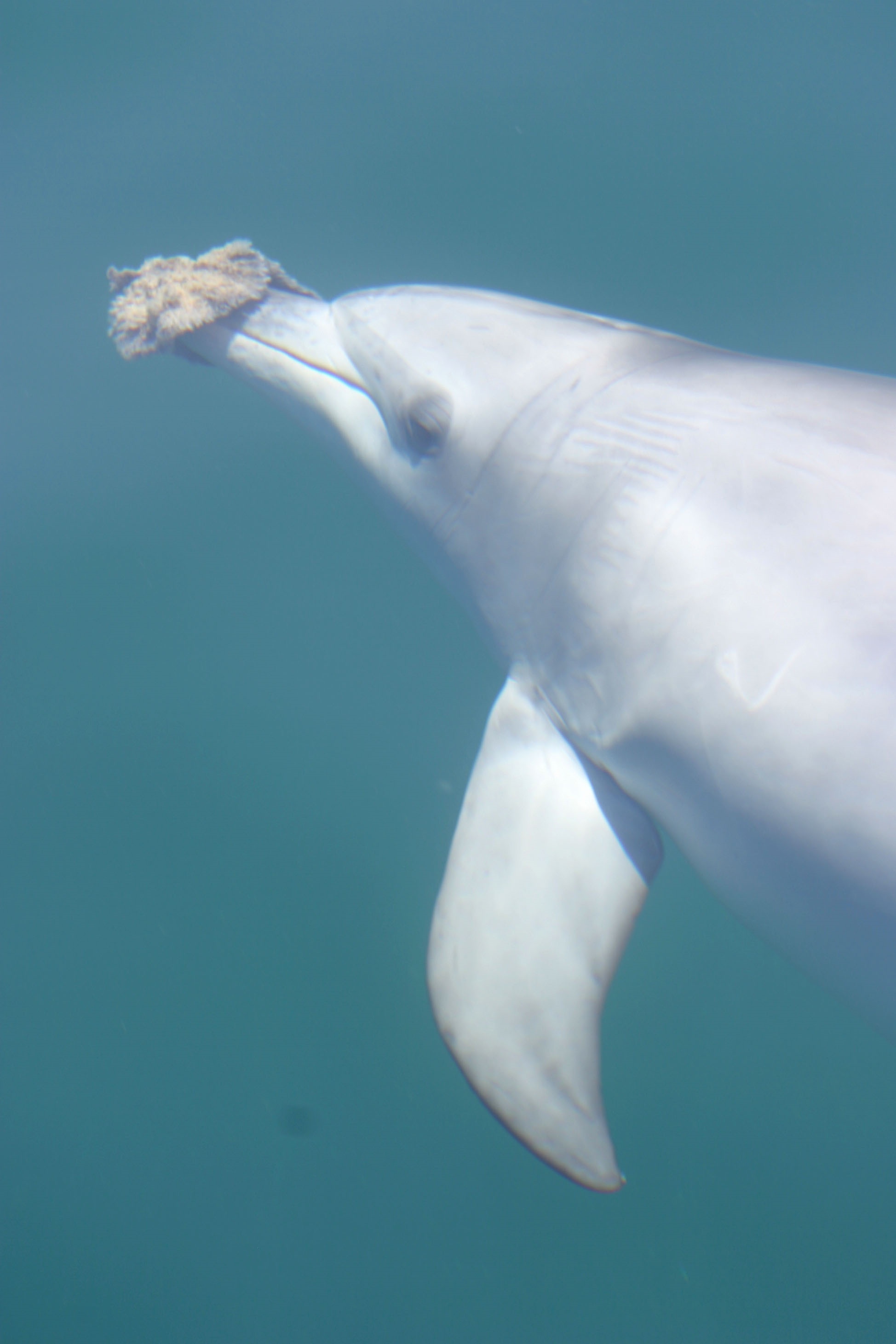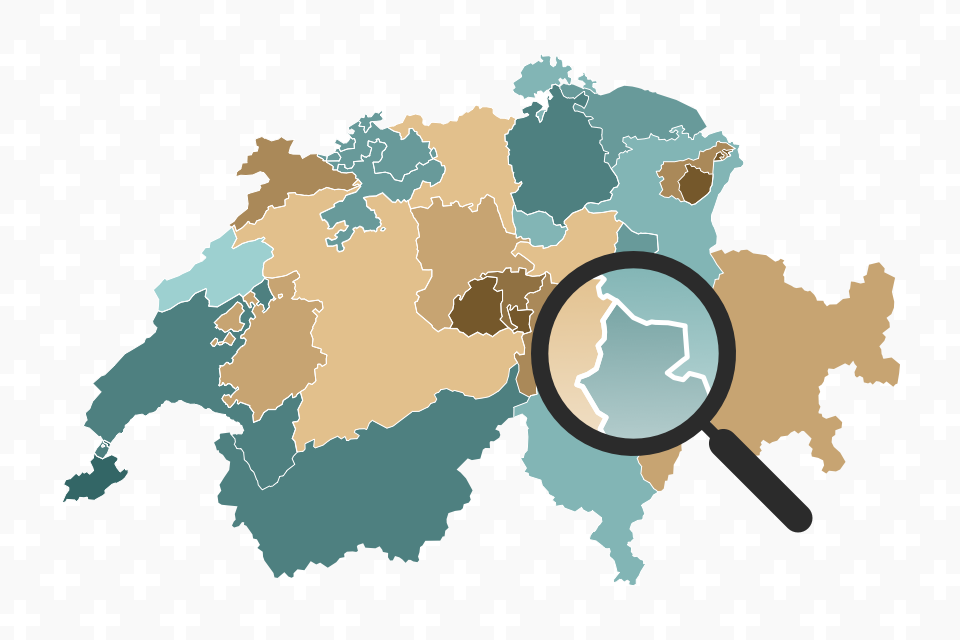Sponge trick helps dolphins find food

Dolphins in Western Australia using marine sponges as a foraging tool have managed to find a new niche food, according to Swiss researchers. The sponge-using bottlenose dolphins pass on the skill from mother to daughter.
Tool use – sometimes seen among primates and birds – is rare in the animal kingdom. It has been proposed as a significant driver of human evolution.
The dolphins’ sponging technique was thought to be aimed at catching bottom-dwelling fish that are hard to detect by the dolphins’ sonar. However, evidence of whether this foraging tactic actually paid off was lacking – until researchers from University of Zurich, led by Michael Krützen, began to analyse dolphin blubber samples for fatty acids which reflect the animals’ diet.
Novel food source
The results, published in the journal Proceedings B of the Royal Society, show that the sponging dolphins have access to a novel food source not available to the other dolphins in the same area, Shark Bay.
“The exciting part is that they were so different. You would expect this between species in the same habitat but not within the same species,” Krützen told swissinfo.ch.
“We now have proof that it [sponging] leads to different diets,” he added.
The sponging technique is rather intricate. The dolphins detach the sponge from the ground and position it like a glove over their nose (rostrum).
“They use it to protect their rostrum from abrasion while searching for prey hiding in the sediments. With the sponge they chase away fish, dropping it to swim after the fleeing fish. Then they come back and pick it up again.”
Krützen started working in Shark Bay in 1996 while researching for his doctorate at the University of New South Wales, initially looking at cooperation between male dolphins.
Cultural hitchhiking
The research on the dolphins in Shark Bay was one of the first studies to show the effect of so-called cultural hitchhiking in animals other than people: essentially the fact that social behaviour such as sponging can also shape the genetic makeup of an animal population in the wild.
A well-known example of this link between cultural transmission (passing skills or behaviour down through the generations) and genetic transmission is the lactose tolerance developed by northern Europeans from the cultural practice of dairy farming.
“There was a selective advantage to being able to digest lactose and this genetic marker hitchhiked on a cultural trait. It can change the genetic makeup of the population,” Krützen explained.
Previous work in Shark Bay had shown that daughters learn the sponging behaviour from their mothers through cultural transmission. “You either learn it from your mother or you never learn it.”
Along with the learned skill, a genetic marker was passed on from mothers to daughters. “This genetic marker is abundant now,” Krützen said.
The exploitation of novel niches can lead to a significant reduction in competition for food, which, researchers say, could be one of the reasons why the world’s highest density of dolphins seems to be found in Shark Bay.

In compliance with the JTI standards
More: SWI swissinfo.ch certified by the Journalism Trust Initiative










You can find an overview of ongoing debates with our journalists here . Please join us!
If you want to start a conversation about a topic raised in this article or want to report factual errors, email us at english@swissinfo.ch.